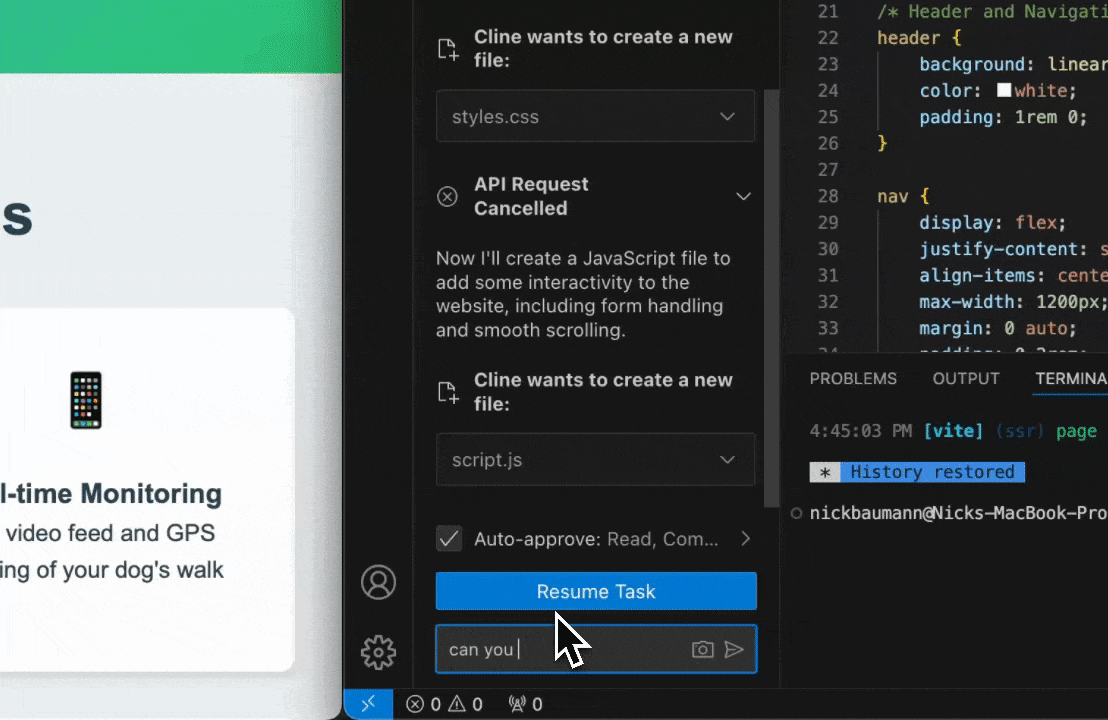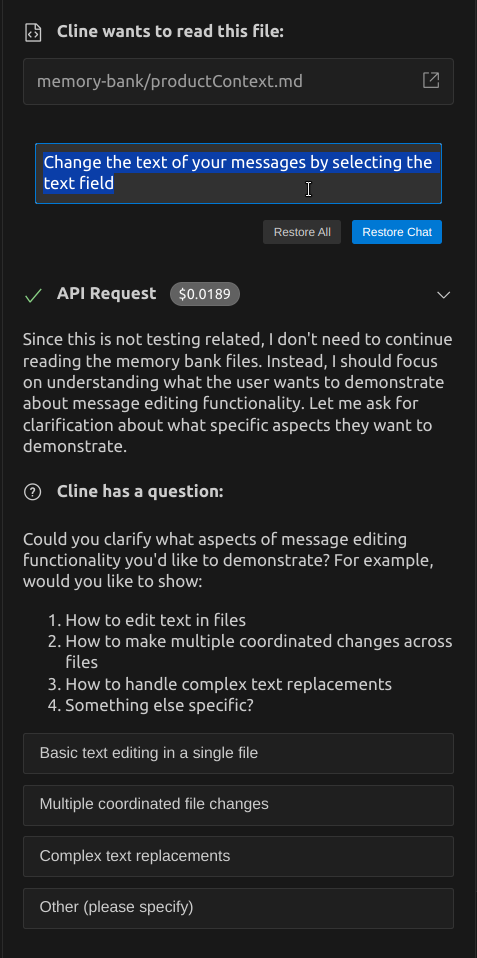Version Control and Message Management
Workspace Checkpoints
When collaborating with AI coding assistants, maintaining control over your codebase is essential. Bwat's Checkpoint system provides a robust safety net for confident experimentation.
Checkpoints automatically capture workspace snapshots after each task step, enabling you to:
- Monitor and review incremental changes
- Revert to any previous state when needed
- Experiment freely with auto-approve enabled
- Maintain complete workspace control
⚙️ Checkpoint Functionality
Bwat generates checkpoints after each operation (file modifications, command execution, etc.). These checkpoints:
- Operate independently of your Git workflow
- Preserve contextual continuity
- Utilize a dedicated shadow repository for change tracking
For instance, during feature development where Bwat makes multiple file changes, each modification creates a checkpoint. This allows you to review every alteration and potentially revert to any prior state without impacting your primary Git repository.
Reviewing Changes & Restoration Options
After each operation:
- Select "Compare" to examine file modifications
- Choose "Restore" to access version recovery options
.png)
Version Restoration
To return to a previous state:
- Click "Restore" adjacent to any step
- Select from three restoration modes:
- Full Restoration: Reset both codebase and task context
- Task Context Only: Maintain code changes while reverting task state
- Workspace Only: Revert code changes preserving task context
Example: If unsatisfied with component styling modifications, use "Workspace Only" restoration to undo code changes while retaining conversation context for alternative approaches.
💡 Practical Applications
Checkpoints facilitate experimental development with Bwat. While human coding typically follows methodical iteration, AI can implement substantial changes rapidly. Checkpoints provide version control for these transformations.
-
Auto-Approve Utilization
- Enables safe rapid iteration
- Simplifies reversal of undesired outcomes
-
Multi-Approach Testing
- Confidently evaluate alternative solutions
- Compare implementation variants
- Quickly return to functional states
- Ideal for architectural exploration

In this scenario, I restored both codebase and task to their original states after unsatisfactory modifications to my robotic dog-walking platform (still in development).
✨ Optimal Practices
- Utilize checkpoints as safety mechanisms during experimentation
- Employ auto-approve mode more aggressively with rollback assurance
- Select restoration type strategically:
- "Full Restoration" for complete resets
- "Task Context Only" for prompt refinement
- "Workspace Only" for implementation alternatives
🛟 Checkpoints function as your development safety net, enabling creative exploration while preserving control. Whether refactoring complex systems, evaluating architectural approaches, or leveraging auto-approve for rapid prototyping, checkpoints ensure reversible experimentation.
🗑️ Checkpoint Removal
Delete all checkpoints via the "Delete All History" option in the task history menu. Note this action also clears all task records. Checkpoints reside in VS Code's globalStorage.
Message Editing
Bwat permits post-submission message editing (excluding initial task messages) for:
- Result refinement
- Request rephrasing
- Additional context inclusion
Two restoration options exist:
- "Chat Restoration": Reverts task state and resubmits with edited message
- "Complete Restoration": Reverts both task and workspace states before resubmission
Editing Interface:
- Click messages to activate edit mode
- Bwat auto-selects all text when editing
Keyboard Controls:
- Escape: Exit editing
- Enter: Restore task only
- Cmd/Ctrl + Enter: Restore task and workspace
- Shift + Enter: Insert line break
